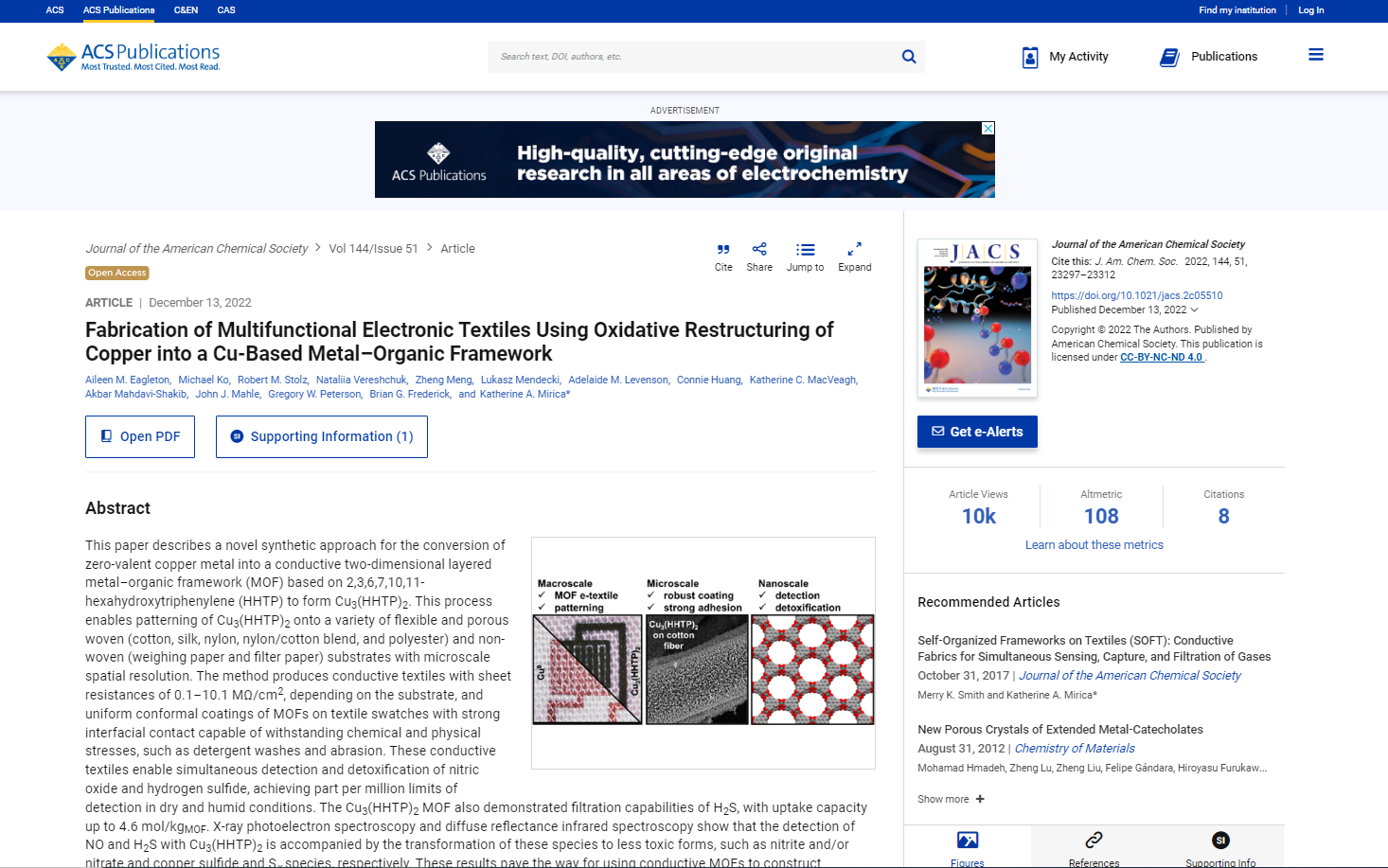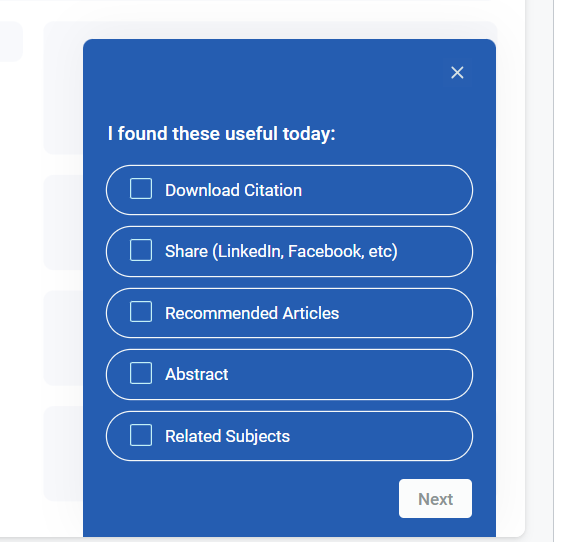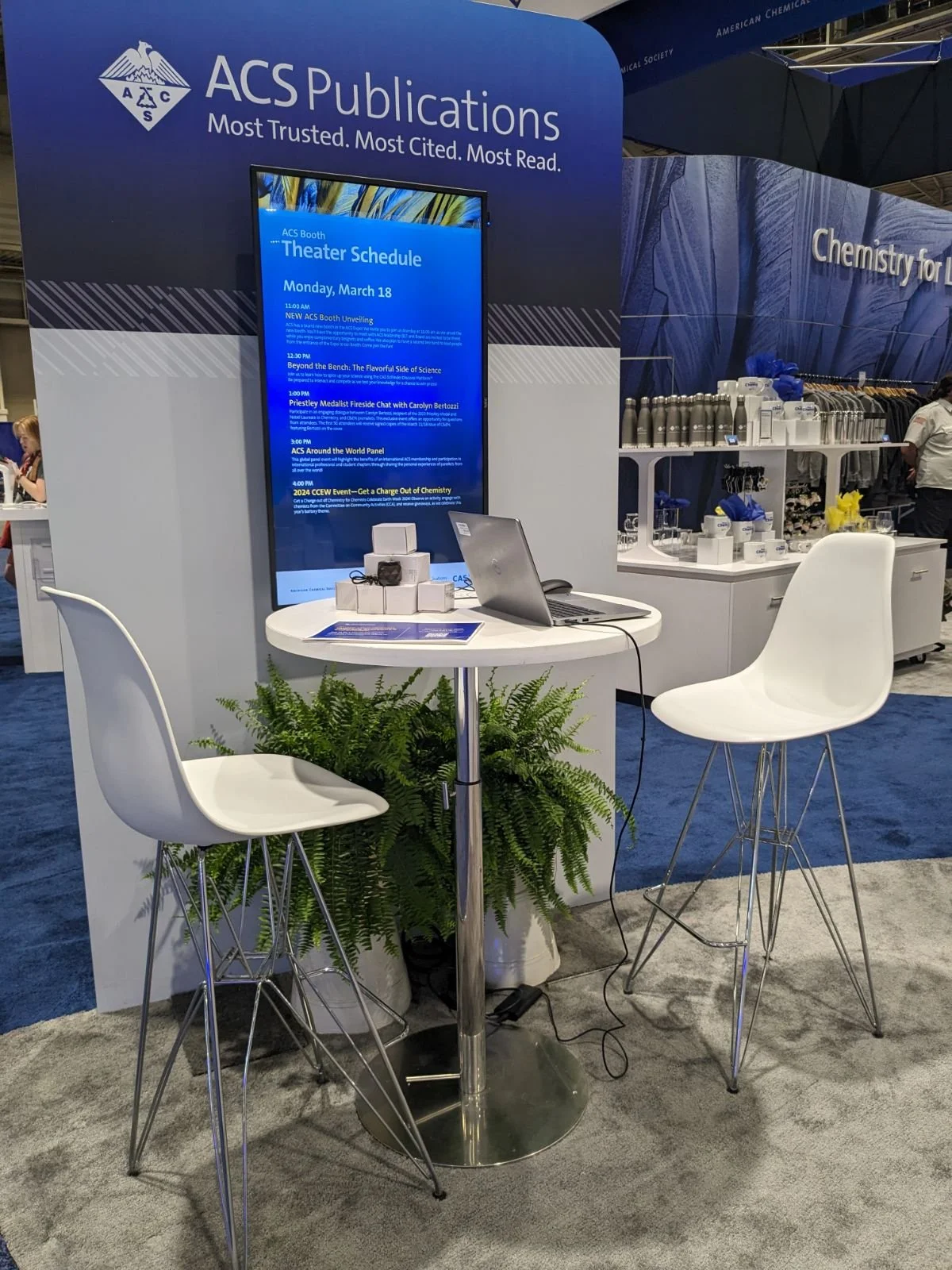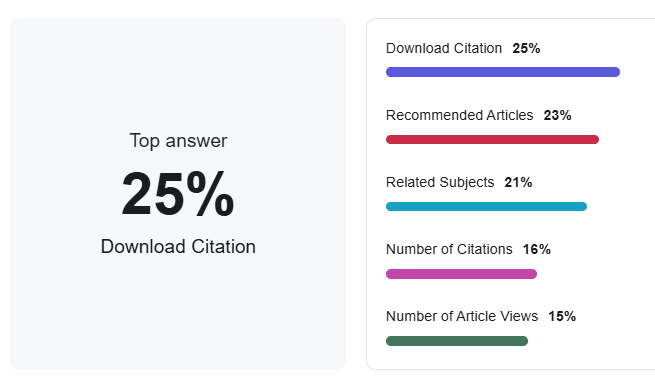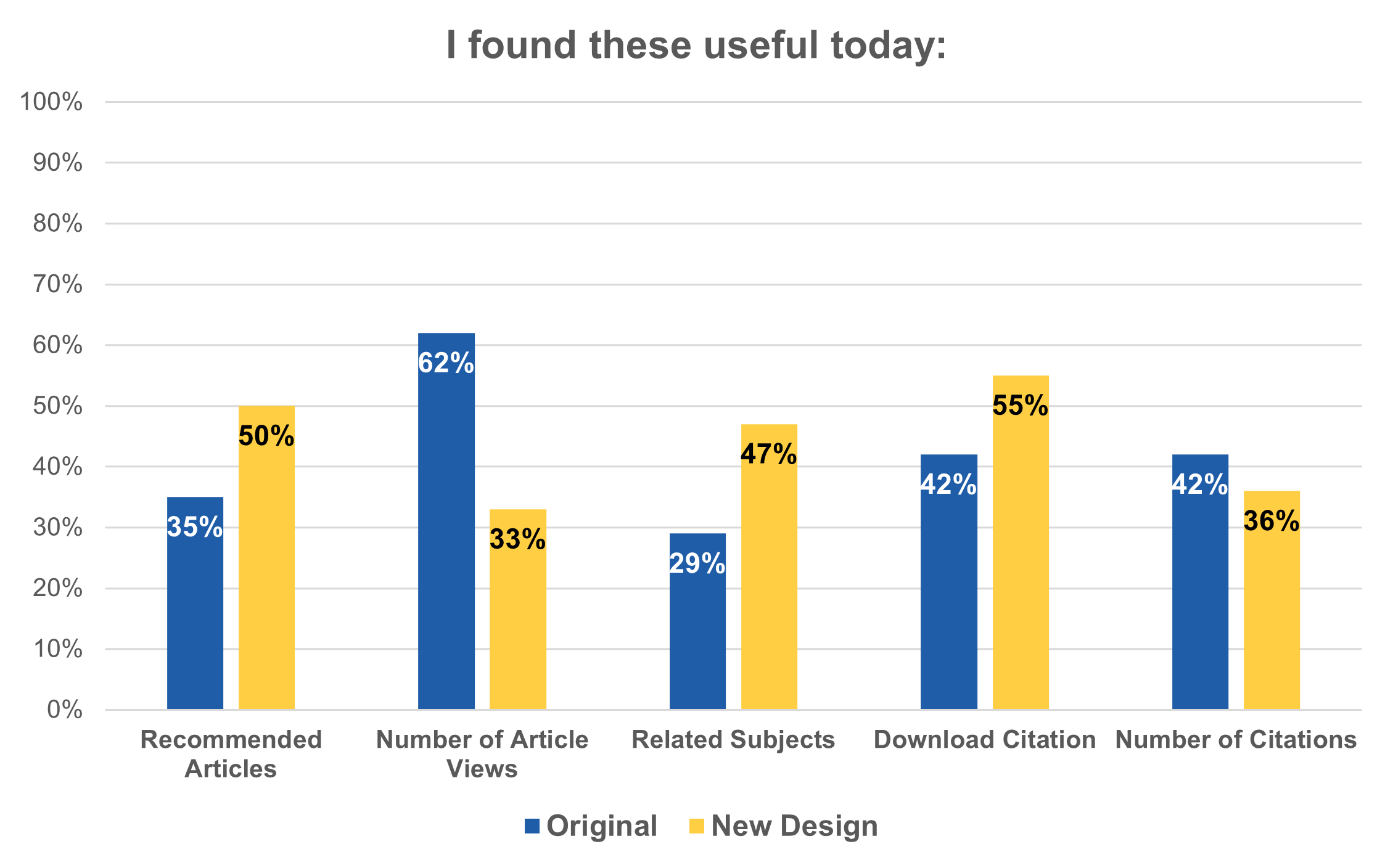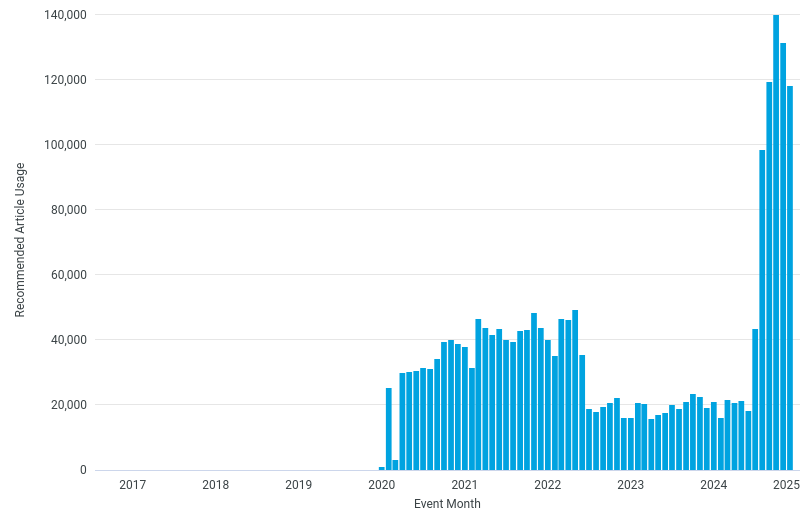Reimagining the ACS Publications Article Page
Mixed-methods evaluation to improve user engagement and retention.
Project Background:
For many researchers, the ACS Publications article page is just a brief stop on their journey rather than a true destination. Instead of staying engaged with ACS content, users often flit between the site and Google, hunting for related papers, supplemental information, or different ways to refine their searches. Key features designed to keep them engaged - such as recommended articles and subject-based search - were being overlooked, leaving valuable opportunities untapped.
To address this, I conducted a mixed-methods study to uncover how researchers navigate and interact with the article page, pinpoint friction points, and identify what would encourage deeper engagement. Based on these insights, my team introduced a redesigned page aimed at making relevant content more discoverable and keeping users within the ACS Publications ecosystem. A follow-up study then assessed whether these changes successfully shifted user behavior and increased meaningful interactions with key elements of the page.
Goals
Understand User Interaction: Investigate how users interact with the various elements of the article page, including underutilized features like recommended articles and search by subject.
Inform Design Improvements: Make data-driven design recommendations to optimize user engagement and enhance the overall experience.
Evaluate Impact of Redesign: Assess the effectiveness of the new proposed design and conduct a follow-up study to determine whether engagement with key elements improved post-implementation.
Activities:
Participant recruitment
User Interviews
Prototype Usability Testing
Guerilla Testing
Survey Creation and Analysis
Qualitative Data Analysis
Tools: Dovetail, HotJar, Maze, Figma, Google Analytics
Methods:
Virtual User Interviews
I conducted virtual user interviews with 14 participants to gain a deeper understanding of how they engage with the ACS Publications article page. The discussions focused on their usage of key features such as metrics, subjects, and recommended articles. This research provided valuable insights into user behavior, revealed pain points, and uncovered opportunities for enhancing the overall user experience.
HotJar survey
I collaborated with developers to embed a HotJar survey on the ACS Publications article page. The survey featured a question aimed at assessing the usefulness of specific page elements on that day. To ensure comprehensive coverage, two surveys were launched simultaneously, addressing all elements under consideration. Following the implementation of the new designs, a second version of the survey was deployed to gather follow-up feedback, evaluating whether users were more engaged with the targeted elements.
Guerilla Prototype Testing
I worked closely with designers and stakeholders to develop a prototype that incorporated recommendations derived from user interviews and survey data. At the ACS Spring Conference, I conducted usability testing sessions with 20 participants to evaluate the prototype. Participants were recruited on the spot as they walked by, with the incentive of a cool speaker in exchange for their time. Feedback from these sessions provided actionable insights that were used to further refine the article page design.
Follow-Up Interviews
After implementing the design changes, I conducted follow-up virtual interviews with 6 participants who indicated that they noticed updates to the page. These sessions provided valuable insights into how the changes were received—very positively—and explored whether users were now engaging with the targeted elements. The feedback helped validate the effectiveness of the updates and identify any remaining opportunities for improvement.
Analysis:
Qualitative Data Analysis
User interviews were uploaded to Dovetail for in-depth analysis and tagging of key quotes. Themes identified during the interviews were categorized and added to project insights. These findings were later shared with stakeholders, accompanied by key moments from the recordings to provide a deeper understanding and allow them to engage directly with the user feedback.
Quantitative Data Analysis
HotJar survey data was analyzed to identify trends and patterns in user feedback. Responses were aggregated and quantified to assess the overall usefulness of key page elements and gauge user engagement. This analysis provided actionable insights to inform design decisions and measure the impact of recent updates.
Results:
HotJar Survey Results
Visitors to the ACS Publications article page were surveyed to assess the usefulness of various page elements, both before and after the implementation of the new design. The results revealed a significant increase in the perceived usefulness of key engagement features, such as recommended articles and related subjects. Conversely, less critical elements, such as the number of citations and views, showed a decline in importance, reflecting the new design’s strategic focus on prioritizing user-relevant content.
Changes Noted in Google Analytics
Following the implementation of user research recommendations, engagement with recommended articles increased by 600%, highlighting the impact of user-centered design changes on driving content interaction.
Impact:
The redesign of the ACS Publications article page, guided by insights from user research, had a significant impact on user engagement. Usage of key engagement features, particularly recommended articles, increased by 600%. By enhancing these features, the redesign encourages users to explore additional relevant content, creating new pathways for research discovery. This improved experience not only drives immediate engagement but also supports long-term user retention by fostering deeper connections with the platform.
